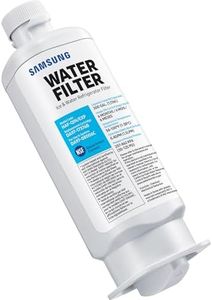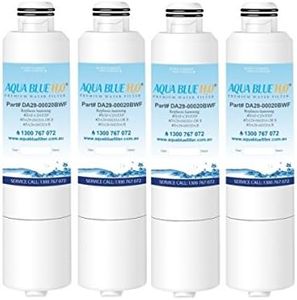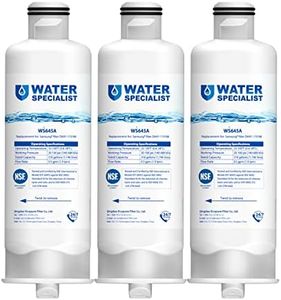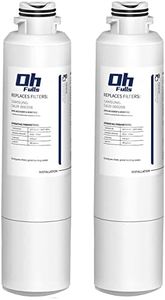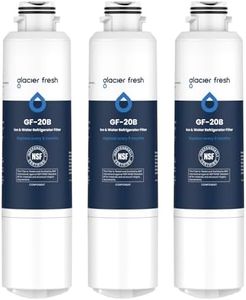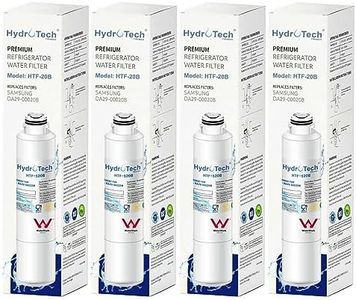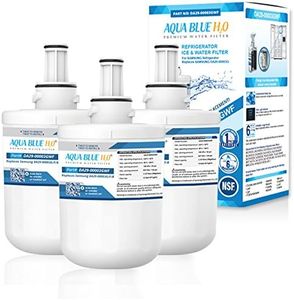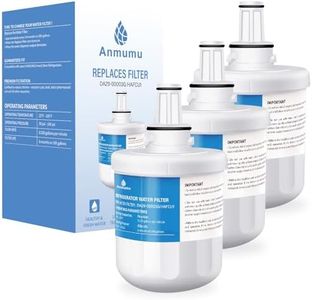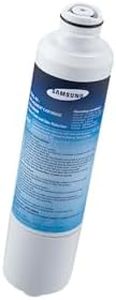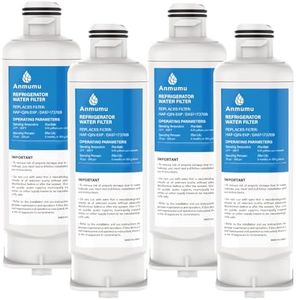We Use CookiesWe use cookies to enhance the security, performance,
functionality and for analytical and promotional activities. By continuing to browse this site you
are agreeing to our privacy policy
10 Best Samsung Refrigerators
From leading brands and best sellers available on the web.Buying Guide for the Best Samsung Refrigerators
Choosing a refrigerator is an important decision because it's one of the most used appliances in a home. When picking a Samsung refrigerator or any other brand, it's best to focus on how it will fit your kitchen, store your food, and match your lifestyle needs. Think about the space where it will go, what kind of foods you buy, and the features that make your daily routine easier. Comparing key specifications helps you filter out choices and find the model that's the best fit for you and your household.Capacity (Volume in liters or cubic feet)Capacity measures how much food and drink you can store in your refrigerator. This is one of the first things to consider, especially for families or people who cook a lot. Smaller capacities (under 300 liters/10 cubic feet) work well for singles or couples, while medium capacities (300–500 liters/10–17 cubic feet) fit most families. Large capacities (above 500 liters/17 cubic feet) are best for big households or those who shop in bulk. Think about your shopping habits and how often you want to shop to choose the right size.
Type (French door, Side-by-side, Top freezer, Bottom freezer, Single door)The type of refrigerator affects both storage style and space efficiency. French door models offer wide, open shelves and large freezer drawers, ideal for families and those who like organizing groceries. Side-by-side models split the fridge and freezer vertically, good for those who want equal access to both. Top freezer and bottom freezer types are traditional; top freezers are often more affordable and compact, while bottom freezers make it easier to access fresh food at eye level. Single door units are the smallest and work well for tight spaces or as a secondary fridge. Consider your kitchen size and how you like to access your food when deciding.
Energy Efficiency (Star Rating or kWh/year)Energy efficiency tells you how much electricity your refrigerator uses. Units with higher star ratings or lower annual energy consumption are better for the planet and your power bill. For most people, choosing a fridge with at least a mid to high rating is a smart long-term choice. Check how much you run other appliances, and if you’re eco-conscious or want to save on bills, go for the highest efficiency possible.
Cooling Technology (Twin Cooling, All-Around Cooling, etc.)Cooling technology refers to how the fridge keeps your food fresh. Advanced systems like Twin Cooling or All-Around Cooling maintain even temperatures and humidity, keeping produce fresher for longer and preventing odors from mixing. If you store a lot of fruits, vegetables, or open foods, or if you want to minimize food spoilage, look for better cooling technologies. Simpler models are usually fine for less demanding use.
Features (Water/ice dispenser, digital controls, convertible compartments, deodorizer)Extra features enhance convenience and user experience. Water and ice dispensers add quick refreshment, while digital controls make setting temperatures easier. Convertible compartments let you swap a freezer into a fridge section when you need more space for fresh food, and built-in deodorizers fight odors. Choose the features you’ll actually use every day to avoid paying for extras you don’t need.
Physical Dimensions and LayoutThe size and shape of the refrigerator determine if it will fit in your kitchen space. Always measure the spot where you want to place the fridge, including space for doors to open fully and ventilation gaps. Interior layout matters too; adjustable shelves, large door bins, and special drawers can make storage easier and more efficient. If you store lots of large containers, make sure there’s space for them.
Noise LevelNoise level describes how much sound the refrigerator makes during operation. Most fridges are fairly quiet, but if your kitchen is close to a living room or bedroom, quieter models can make a difference in comfort. Look for the noise level the manufacturer lists (measured in decibels) and choose a quieter one if you’re sensitive to sound.
Build Quality and FinishBuild quality refers to the materials and sturdiness of the refrigerator, while finish means its outer look (like stainless steel or colored panels). High-quality materials last longer and are easier to clean. Choose a finish that matches your kitchen design and is resistant to fingerprints and smudges, especially if you have children or want easy maintenance.
